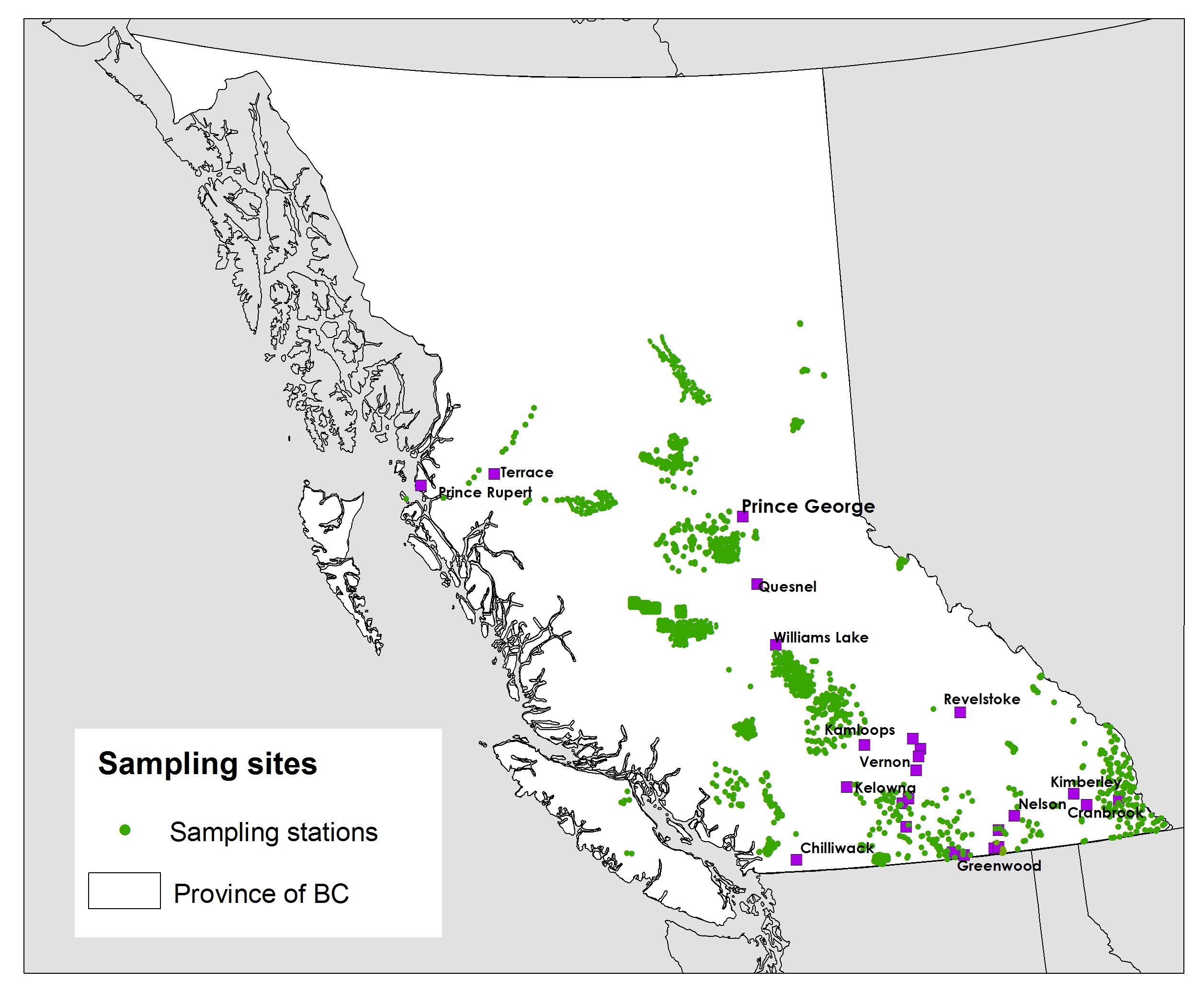
Dear WildCAM members,
We are thankful for the support of the WildCAM community, and the data contributions members have given to the mesocarnivore team at WLRS for the Mesocarnivore Distribution Modeling project. As we highlighted in previous communications, our intent is to generate distribution and population trends for all 18 species of mesocarnivores. However, we have started with the fisher, as the Columbian population is provincially listed as endangered.
We have collated all data sent so far and have focused first on Columbian fisher population density estimation. In the map attached to this email, you can see all the sampling locations obtained so far. We are also in the process of writing an internal report, but we are interested in publishing our findings in a peer-reviewed journal. Before we do this, we want to give another chance to anyone who still has some data but hasn’t had the time to send it in.

If you are eager to collaborate and have not yet submitted data, please do so by September 15th or contact us at mesocarnivores@gov.bc.ca. We recognize the significant time and effort the camera trapping community puts into obtaining this data. Unfortunately, we are unable to offer financial support for those providing data at this time, so this would be on a volunteer basis. The project team commits to providing updates to collaborators every six months. If you require more frequent check-ins or a data-sharing agreement, please let us know. You are also always welcome to reach out to us with questions or for online meetings.
We also want to give a shout-out to everyone who has already contributed data to our project. The fisher population estimate will be the first output, as it is necessary for the Conservation Data Centre 2025 listing review; we will next focus on fisher distribution maps, wolverines, badgers, and more!
Thank you for your continued support and contributions.
Cindy Hurtado and Joanna Burgar